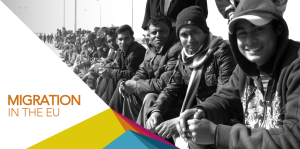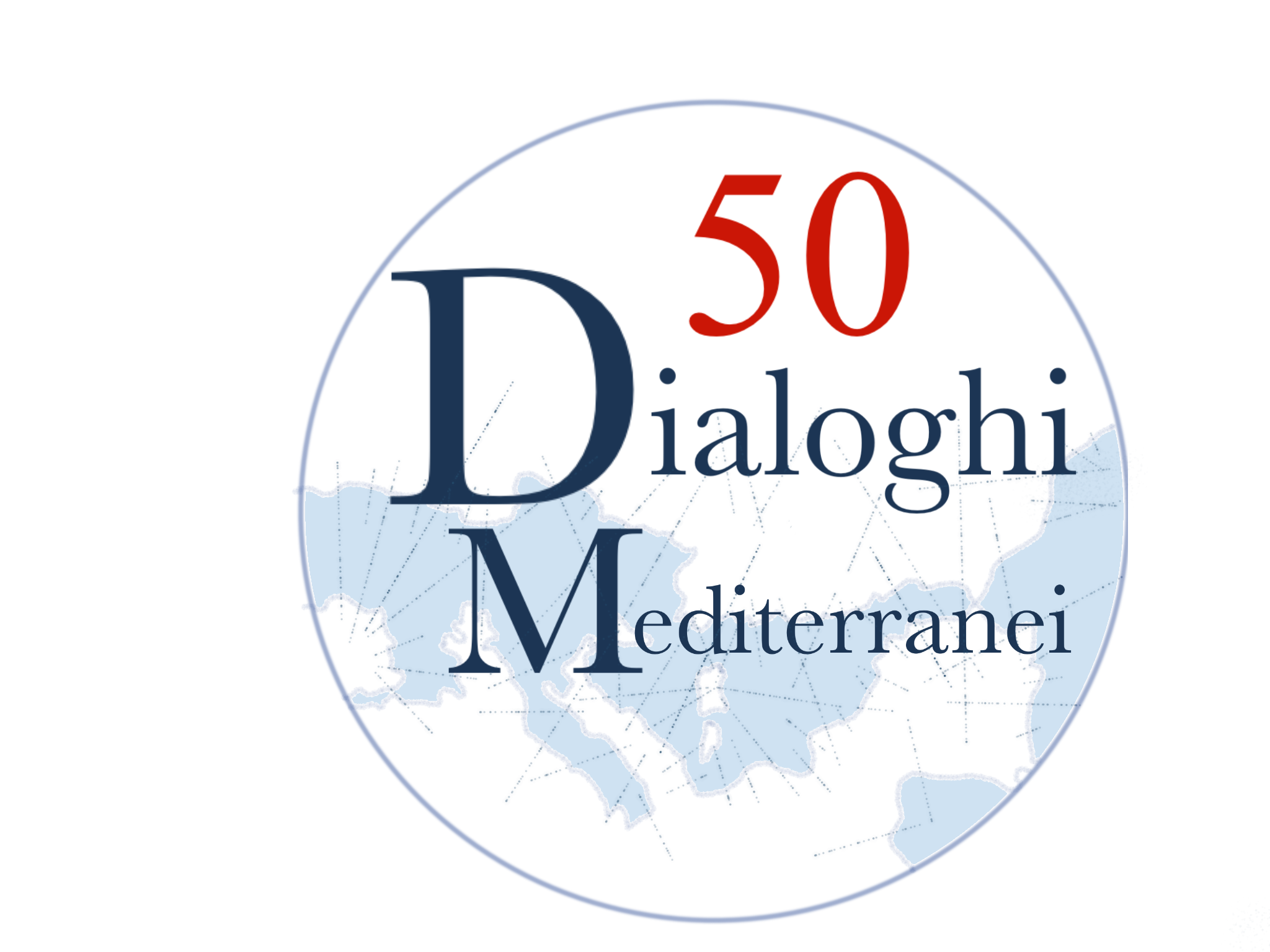Italy has historically known the presence of foreign groups within its territory. In the nineteenth century in the Kingdom of Sardinia the state issued special passports to foreign residents according to their social status: first-class passports for merchants, shopkeepers, civilian soldiers, military, second-rate for under-officers, workers, day workers .
Even at the time of unification the foreigners who had participated in the expedition of the Thousand for the conquest of the Kingdom of the Two Sicilies were present in large number (Einaudi, 2007).
Let us not forget that until then citizens of the Italian states considered each other foreigners, especially for the very wide linguistic and cultural differences among the different regions, more evident when they are looking for work from the south to the center of the peninsula (Vitale, 1995). After the end of the Second World War and the birth of the Republic there was a new attitude towards foreigners. The Italian Constitution of 1948 integrated as an important part of its principles regulations against discrimination and racism, redesigning the condition of the foreigner. Even today, articles 3 and 10 of the Italian constitution recite:
«Art. 3 All citizens have equal social dignity and are equal before the law, without distinction of sex, race, language, religion, political opinions, personal and social conditions. It is the duty of the republic to remove the obstacles of an economic and social order which, by limiting in fact the freedom and equality of citizens, prevent the full development of the human person and the effective participation of all workers in the political, economic and social organization of the country» (Cfr. art. 3. Cost.).
«Art. 10 The legal status of the foreigner is regulated by the law in accordance with the rugulations and international treaties. The foreigner, to who the effective practise of democratic freedom guaranteed by the Italian Constitution is prevented in his country, has the right to asylum in the Republic territory, according to the conditions established by the law. The extradition of the foreigner for political crimes is not permitted »(Cfr. art. 10. Cost.).
The new Republic thus definitively abolished the racial laws adopted during the fascist period, giving foreigners civil rights, regardless of their origin.
From a country of emigration to a country of immigration: push factors
During the years of economic boom Italy, from a country of emigration, becomes a country of immigration. Several authors try to explain the pushing factors that caused this radical change. Ugo Melotti claims that the first immigrations to Italy happened accidentally, in fact many of those who would have rather gone to the traditional countries of immigration of Central and Northern Europe, finding the borders closed, begin to head towards Italy. Luca Einaudi, explains the decisive reasons that in his opinion determined the increase of foreigners in Italy: «The Italian economic growth between the 1950s and 1980s was one of the largest in Europe. This growth has increased the demand for unskilled foreign labor, offering low incomes compared to the Italian standards ».
The first significant migratory phenomena involving Italy as a destination country had to do with people coming from from poor and developing countries in the sixties and seventies; in most cases the flows consisted of undocumented migrants who entered Italy in search of a job to improve their economic situation. According to Luca Einaudi, the growth of migration in Italy in the seventies and eighties is due to the economic boom and not to the crisis that hit Europe during the years 1973-74; therefore the growth of migratory flows coming from poor and developing countries towards Italy has gone hand in hand with the economic growth of the country.
To reinforce this thesis, we can see that, between the end of the 1950s and the beginning of the 1980s, the Italian per capita income rose by 92.3% compared to the average value of European countries (Einaudi, 2007).
Also the neoclassical immigration theory is based on this correspondence between the economic development phase and the beginning of migratory flows, indicating the differences in income as the cause of international migration flows. Economic motivations are flanked by the requests for political asylum proposed in the same years by men and women fleeing from countries like Argentina, Brazil, Chile, Eritrea, Ethiopia, Somalia (Melotti, 2004).
The first legislation of the Ministry of Labor on migration: circular letter no. 51 of 1963
Until the early 1980s, an estimate of the real number of foreign residents in Italy was missing and there were great uncertainties regarding people who had a regular residence permit. Between the seventies and eighties, the Ministry of the Interior declared that the number of residence permits granted had risen from 150,000 during 1970 to 300,000 in 1980, thanks also to the amnesties granted by the government in those years (Colombo., Sciortino, 2004a).
It is very important to understand that the first initiatives for the regularization of migratory flows were implemented following the slowdown in the economic boom and the increase of difficulty for foreign citizens to place themselves on the labor market; as Einaudi writes, Italy could not afford mass immigration because of the difficulties in building effective selective mechanisms for workers coming from developing countries.
The first institutional intervention was the transfer of skills in the field of migration from the Ministry of the Interior to that of Labor, to deal with employment problems for foreign workers. This event marks a passage, also in the political perception of immigration, which from a peripheral issue becomes a real problem that will assume a central role in the planning policies of the labor market.
The Ministry of Labor in the Circular letter No. 51 of 1963 introduced the issuance of a residence permit subject to the following requirements: the authorization by the UPL (Provincial Labor Office), the employment contract, the go-ahead of the central police station and the entry visa for work reasons. The residence permit for workers had a duration of one year and could only be renewed by people in possession of a regular contract, without any extension in the event of unemployment. This legislation was conceived as a form of defense of the Italian workforce following the decrease in economic growth; in fact, before a company could hire a non-EU worker, the presence or absence of requests from Italian citizens to perform that particular job had to be verified by the competent office (UPL).
Einaudi reminds that foreign citizens who wanted to enter Italy without a work contract, first passed by a tourist visa, to then look for a job on the spot. Once the job was found, a request for recruitment from abroad was presented ex post followed by a return in their homeland, thus simulating the subsequent entry as the first regular entry, flanked by the authorization to work and the residence permit (Einaudi, 2007). These rigidities have immediately created the conditions for the accumulation of a large number of immigrants without residence permits and with undeclared work. What follows, starting with the emanation of the 1986 immigration law, is a different, more liberal policy.
 The Foschi law of 1986, the first immigration law
The Foschi law of 1986, the first immigration law
The Foschi law integrates the International Convention on Migrant Workers No. 143 of 1975, which came into force in 1978, and is based on the following assumptions: “Labor is not a commodity and that poverty, wherever it exists, is a danger to the prosperity of all, and it recognizes the solemn obligation of the Organization to support the implementation of appropriate programs, inter alia, to implement full employment, in particular by means of facilitating transfers of workers, including migrations of manpower ».
Among the most important articles regarding the condition of migrant workers of this convention are the art. 10 and 11: «Art. 10 Each member for whom the convention is in force undertakes to formulate and to implement a national policy aimed at promoting and guaranteeing, with methods adapted to national circumstances and practices, equal opportunities and treatments in the field of employment and profession, social security, trade union and cultural rights, as well as individual and collective liberties for people who, as migrant workers or family members of the same, are legally in its territory».
«Article 11. 1. For the purposes of the application of this part of the convention the term ‘migrant worker’ designates a person who emigrates or has emigrated from one country to another, in view of an occupation, otherwise than for his own behalf; it includes any person regularly admitted as a migrant worker ».
Although the introduction of this legislation has greatly improved the working conditions of migrant workers, other types of situations and other categories of workers remained outside. The Foschi law did not stop at the regularization of the working status of immigrants, in fact one of the novelties of this law was the recognition of other types of rights to the immigrant population, including family reunification and the amnesties for the regularization of those people who were in a condition of irregularity, as well as the rights related «to the use of social and health services and the maintenance of cultural identity, to school and to the availability of housing » (Einaudi, 2007).
Among the main failures of this law is the lack of recognition of self-employment and hawkers, thus ignoring the importance of the economy immersed in Italy, where most of the immigrants were employed (Ascoli,1979). Moreover, employers could not personally select workers, they had to select them according to the list ranking, those higher up the list had more opportunities to find a job. Finally, it completely lacked recognition of the importance of labor recruitment abroad.
The first intervention on immigration: the Martelli law of 1989
With the law proposed by Claudio Martelli (vice-president of the Council of Ministers of the Socialist Party), known as the “Martelli law”, a series of important innovations emerge, aimed at improving social status and facilitating the recognition of social rights and the cohabitation of immigrants in Italy.
Between the end of the 1980s and the beginning of the 1990s, the growth of migratory flows and a period not particularly flourishing for the Italian economy facilitate the proliferation of prejudices and xenophobia towards foreign citizens, especially those of African origin. Very soon the issue of racism and discrimination takes a central role in public opinion, also following various news reports, among which probably the most significant being the killing of Jerry Masslo by a gang of robbers (Sardo, 2014).
For the first time there was a strong mobilization from the population, culminating with the participation of more than two hundred thousand Italian and foreign citizens at the demonstration organized in Rome against racism and for the rights of immigrants (Grillo, 1989). This popular awakening calls into question the entire management of the migration phenomenon by the political system and the regulations that had been adopted until then, which were no longer considered able to face the new reality.
The most important points of the Martelli law were:
a) a regularization of foreign workers already present in Italy (amnesty);
b) revision of law 943, guaranteeing equal rights and health, social security and housing guarantees for foreign workers;
c) access for a greater number of foreigners to university education and professional institutions;
d) a flexible scheduling of migratory flows for only non-EU immigrants without a job (which, however, must not be identified with the “limited number”);
e) the abolition of the geographical reserve for non-European asylum applicants.
Martelli judged as a priority the regularization of foreigners without residence permits, influenced by trade unions and left-wing and Catholic associations. Within the framework of government, Christian Democrat exponents elaborate a new law on the freedom of circulation for those who want to work in Italy, for which communication to the government was sufficient even just a month before departure. Proposal that meets the heavy criticism of the Northern League; as Einaudi writes, Umberto Bossi thus identified his three enemies regarding the issue of immigrants: «The left-wing hunting for the votes of immigrants, the Catholic church in search of marginalized people to care for and funds to manage, and finally the entrepreuneurs, exploiters of the great capital » (Einaudi, 2007).
The Martelli decree was approved on December 22, 1989, although in Parliament it was modified with respect to the original draft, for example the geographical reserve for non-EU asylum applicants is abolished, so as to recognize the refugee status to all those fleeing their Countries for reasons of racial, religious, political persecution regardless of the geographical area of origin. This change reflected the decrees of the Geneva Convention concerning the status of refugees and asylum applicants and the Dublin Convention on the responsibility of the State to analyze the asylum applications in the European Community. A further novelty is the recognition of forms of self-employment. for foreigners, allowing a supervision on this category.
The decisions for the regulation of annual flows for foreign workers were entrusted to the Ministries of Foreign Affairs, Internal Affairs and Labor. With regard to expulsions, these become applicable only to people who had violated entry and residence provisions and to people convicted for serious reasons of public security. Moreover, the citizen subject to expulsion was granted 15 days to move away from Italy on his own initiative, otherwise the citizen was carried out with accompaniment to the border by the law enforcement.
Given the scarcity of police resources, both in the means and in the accompanying personnel, and in the firm opposition by the anti-racist associations, the expulsion measures have been applied in small numbers.
In the Martelli law, there were no new ideas for the adoption of effective policies for the integration of permanent immigrants: the issue of public housing for immigrants that was not resolved and that became so much a custom that entire families of immigrants were staying with acquaintances or thanks to the help of the community of origin or of the churches that offered them housing support. Conte’s proposal to include them in the quotas for social housing, these were followed by perplexities and disputes both by a large part of the political world and by the citizens (Einaudi, 2007). Following were the regions to take charge of new initiatives for the ‘inclusion of foreigners in the rankings of social housing, but this possibility was left entirely to the arbitrariness of each region, in fact those that were governed by the center-left-wing were more open to this possibility, those governed by the center-right-wing, on the contrary, were more restrictive.
In a very tense political climate and with a mixed majority (PDS, Verdi, Cristiano Sociali, Psi, Democratic Alliance), the Dini government, in the few months of its duration (1995-96), tried to start a new immigration policy (Decree 489/95). At the center of the new decree there were the regularization of irregular immigrants and new procedures concerning expulsion, contained in Article 7 (2)The Dini decree lapsed rapidly because the Constitutional Court declares the impossibility of resubmitting to the Parliament the decrees expired before their conversion into law.
 An organic law: n. 40/1998, cd. Turco – Napolitano
An organic law: n. 40/1998, cd. Turco – Napolitano
In 1996 the center-left wing wins the elections and for the first time after years of technocratic governments the political stability allows us to elaborate a new migration policy, treating immigration as a structural phenomenon that involves not only amnesties, but a necessary planning. The government creates a commission for the preparation of a bill on the entry and residence of non-EU citizens within which the Minister for Social Solidarity Livia Turco, appointed by the Prime Minister Romano Prodi, and the minister of the Interior Giorgio Napolitano work.
Turco declares the three most important goals of the new law:
«a) the fight against illegal immigration;
b) the planning of flows;
c) the construction of a new policy in terms of citizenship, where the immigrant was no longer considered a B-class citizen » (La Stampa, 1986).
Regarding the role played by associations and trade unions, Einaudi writes: «The associations proposed a series of measures in the field of work, such as booking lists in consulates, as a way to signal the willingness of foreigners to come to work in Italy, with call based on the age of registration on the lists. These immigration quotas had to match the labor needs. They also argued that it was not necessary to authorize work to allow the search for a job for a period of two years. Regarding the expulsion issue, they asked to consider it as an exceptional measure of seriousness and not as an instrument to compensate the lack of an immigration policy » (Einaudi, 2007).
After months of work, the legislative proposal begins the parliamentary process of approval on January 31, 1997 and is approved in 1998. For the first time all the immigration regulations are in a single text. With the entry into force of the new law, a broad process of recognition of the fundamental human rights began, in particular regular foreigners were granted all civil rights with equal treatment in this field and judicial protection, in the relations with public administration and in the access to public services. The new law was more flexible in granting residence permits for work, family and study reasons: for the first time foreign students are granted the right to work up to 20 hours per week. With the entry into force of the law a real political process of integration also begins, for which a special fund for migratory policies is created; a very important attention is also dedicated to the fight against discrimination, starting from the access of social housing, to education and health (Einaudi, 2007).
A novelty are the set aside quotas introduced by Article 18 «assigned preferentially to non-EU countries, with which the Minister of Foreign Affairs, in agreement with the Minister of the Interior and with the Minister of Labor and social security, has concluded agreements aimed at regulating entry flows and readmission procedures. Within the framework of such agreements, specific agreements can be defined regarding flows for seasonal work, with the corresponding national authorities responsible for labor market policies in the countries of origin ».
The application of this rule was very important in the following years, consider the case of the Albanian migrant population, for which, thanks to these agreements, potential immigrant workers could apply directly to the consulates. Also for students the same policy is followed, for which thousands of aspiring students could apply for enrollment at the Italian university at the consulates (today in Italy, more than 11,000 Albanian students are enrolled in Italian universities).
With regard to the new residence permits for subordinate workers (permanent), these lasted for two years, at the end of which the renewals could be accessed, the first of them with a duration of more than four years.
In addition to the rules for temporary residence permits, it was also possible to access the “Residence Card” after five years of permanent residence. With the creation of this kind of residence permit, Italy recognized that immigration could no longer be interpreted as a temporary phenomenon, but that, on the contrary, a dynamic and permanent immigration was by now the majority of cases that the country would have found itself to face.
The new law also provided for more restrictive rules, with respect to the Martelli law, regarding controls and expulsions: rejections could be made not only at the border, but also in the vicinity; moreover, it is forbidden to enter the Italian territory for five years for all those who were responsible for expulsion before. This is accompanied by specific protections, such as prohibition of expulsion for children up to sixteen years, for pregnant women, for those who hold a residence permit, for relatives of Italian citizens and, finally, for asylum applicants waiting for protection.
Furthermore, Turco-Napolitano arranges the temporary residence centers, which are in turn expected by the Schengen agreements, for the identification and expulsion of irregular citizens in the territory. The maximum period of stay in the centers was 30 days from the first entry and within 48 hours from the entrance the judge had to validate the detention in the CPT or its immediate release. However, especially in the debate over the last few years following the Primavere Arabe, these centers have been seen as a prison-like structures, as they deprive people of their individual liberty without having committed any crime, risking that expulsions take place without an evident cause.
Regarding the aspect of security and control of flows, the Turco-Napolitano law predicted very strict sentences – up to three years of imprisonment – against the exploiters of illegal immigration and 15 years for traffickers who exploited prostitution and minors. To facilitate the persecution, Turco proposed a specific residence permit for women who had reported the people who had been guilty of rape or who had forced them into prostitution. This new residence permit was scheduled for a period of six months and could be renewed.
With regard to access to citizenship, the proposal included the inclusion of the ius soli criterion, which considered the acquisition of citizenship by foreigners born abroad after five years of residence and by children born in Italy at the first year of elementary school, provided that one of the parents was born in Italy or both born abroad, but with at least five years of residence in Italy. However, this proposal was not taken into consideration by the Parliament, leaving a legislative gap that still today cannot say to have been fully filled.The art. 46 of the Turco-Napolitano Consolidated Text considered the creation of a Commission for Immigrant Integration Policies, chaired by Giovanna Zincone in the Department of Social Affairs of the Presidency of the Council of Ministers.
This Commission introduced an innovative concept based on the idea of Reasonable integration according to two lines (Article 3 of Law 40/1998): «Integration is a process of non-discrimination and inclusion of differences, therefore of contamination and experimentation of new forms of relationships and behaviors, in the constant and daily attempt to hold together universal principles and particularisms. It should prevent situations of marginalization, fragmentation, ghettoisation, which threaten the equilibrium and social cohesion, and affirm universal principles such as the value of human life, the dignity of the person, the recognition of female freedom, the valorisation and protection of childhood, on which exemptions can not be granted, not even in the name of the value of difference ».
The two lines to be followed for the new concept of reasonable integration were on one hand integration as the integrity of the person, on the other hand integration as a positive interaction for a peaceful coexistence, for which no group considers the other as harmful. Consequently, a government has the duty to create the favorable conditions in which various communities belonging to society are not excluded from civil life, thus controlling aggressive attitudes (Zincone, 2000).
 The developments of the Bossi – Fini law 189/2002
The developments of the Bossi – Fini law 189/2002
We have seen how the center-right wing forces, which in the years of the Turco-Napolitano reform were in opposition, tried to prevent its implementation, primarily the Lega Nord, which launched a campaign against immigration in 1999, organizing the revocatory referendum of the law (the constitutional court in February 2000, declared the referendum inadmissible because it was against the international agreements of Schengen). Also the party of Gianfranco Fini, National Alliance, worried about the new landings coming mainly from Albania and Kosovo proposes in 1999 a bill introducing the crime of clandestinity and a series of particularly stringent controls for immigrants, which included also identification via fingerprints upon arrival in Italy.
The following year, the Lega Nord, AN and Forza Italia make an electoral agreement and the revision of the immigration law is one of the main points of the alliance program. On March 30, 2000, the new coalition presented a bill in Parliament against immigration in all its forms, putting together with the legislative proposal, especially through the Lega Nord and its leader Bossi, a strong attack on the new multiracial model, starting from a renewed idea of the primacy of the state over the nation. The new bill highlighted the traditions and historical values of the Italian society, presenting clear objectives, among which stand out:
a) fighting illegal immigration;
b) rejecting irregular immigrants who were in the territory, making them definitively lose their right to return to Italy;
c) even stricter laws against traffickers, and against those who exploit and promote prostitution, with sentences up to 18 years of imprisonment;
d) reviewing the relations of cooperation with the countries that had not fulfilled the agreements signed to combat immigration;
e) enrollment at Italian consulates abroad to work in Italy: immigrants were thus granted a social security number with which they could enter Italy, entry whose economic burden would fall on the people who had applied for labor.
f) 36 months for family reunification, linked to the regular payment of taxes.
The League also takes a critical stance towards the Muslim population, using strongly xenophobic rhetorical arguments, aimed above all at preventing the construction of mosques. This propaganda move had excellent results in the regional elections of 2000, and, especially after the attacks of September 11, 2001, the Northern League (Lega Nord) increased its consensus in the electorate thanks to the propaganda against Islam.
The 2001 elections thus take place in a climate in which especially the center-right wing, together with the Northern League (Lega Nord) and the National Alliance, uses the identification between immigration and crime as one of the main mechanisms to defeat the center-left coalition.
The electoral victory of the center follows a new process of reform on the issue of immigration and the bill drafted by Bossi and Fini is based solely on the principle of facilitating expulsion and is against illegal immigration.
The basis of Bossi and Fini’s proposal was the idea of avoiding long-term settlements and also the non-recognition of pension contributions for migrants, so the proposal was to give non-EU workers temporary contracts (not more than three years) after which they had to leave the Italian territory. To this a quota policy is added for the individual regions, based on the needs of this new type of temporary workers.
These bills are challenged by many associations that call into question human rights: the non-EU worker became only labor-power without any right in case of unemployment or dismissal. Seeing the reaction and the protest of civil society and associations involved in the assistance to migrants, the crime of illegal immigration is left aside, however forced expulsions increase and the period of stay in the Cpt centers is doubled from thirty to sixty days, to prevent migrants from returning to freedom due to the impossibility of identification.
After a few months from the elections, Bossi and Fini present the guidelines of their legislative proposal to the Council of Ministers, following what they had affirmed throughout the election campaign, and this is approved on September 14, 2001. To reach the final approval, the part on leaving the national territory of those people for whom the employment contract had expired, were unemployed or who had been fired is changed: a further six-month period of renewal of the residence permit is granted.
The penalties proposed for the crimes of second entry into the national territory remain unchanged after the expulsion measure order and at the third entry the penalty provided from 1 to 4 years of imprisonment.
In addition, the employer, before recruiting a non-EU worker had to check whether there was a request from Italian citizens and EU citizens to do the job. The new law did not recognize the contributions paid by non-EU foreign workers, which favors in many cases the accession to illegal and paid off the books jobs.
Another restrictive rule introduced by the law is the limitation of people who could take advantage of family reunification. In fact, non-EU foreigners residing in Italy are granted reunification only for dependent children and the spouse, but for the other family members this right was not recognized.
Finally, the detection and registration of fingerprints at the time of the issue or renewal of the residence permit are introduced ex novo. The law was so focused on security issues that it lacked an organic asylum law and a law for political refugees.
 The 94/2009 security package (Maroni Law)
The 94/2009 security package (Maroni Law)
Following the Bossi-Fini law, approved by the parliament in 2002, the legislative intervention on the most significant issue was the Maroni law of 2009. In this law n. 94/2009, known as the “security package”, for the first time regulatory restrictions on public safety are placed , and these directly affect immigrants: the crime of entry and illegal stay in the national territory, punishable not only with prison, but also with the obligation to pay a fine ranging from 5,000 to 10,000 euros.
Articles 361 and 362 of the Penal Code also punish the public official and the public service officer who do not report a crime of which they have been notified in their practise or because of their functions: all public offices with which the foreign citizen enters in contact therefore have the obligation to report the irregular status, excluding health workers and (municipal, regional, state) teachers.
All non-EU foreign citizens have the obligation to prove the validity of the residence permit to access services (excluding health and education) and for the completion of the civil status documents (marriage, birth registration, recognition of the natural child, registration of death). This is also followed by the impossibility for irregular people present in the territory to report the employer both for a possible undeclared employment and for exploitation.
With regard to reunification, the obligation to present the certification by the municipality of residence of the housing identity of the accommodation is added.
To these rules further legislative instruments are added:
- the introduction of the residence permit with points, with the consequent risk of losing the available credits and the relative authorization to stay in the territory;
- the issuance of the EC permit for people who have a long-term permit, from which the possibility of access to many social services derives, provided they are able to demonstrate their knowledge of the Italian language;
- the introduction of a quota between € 80 and € 200 for each renewal and issue of the residence permit;
- the abolition of the silence-assent regime after 180 days for the approval by the prefectures;
- the introduction of the voluntary private city guard (or city patrols) to guarantee security.
Furthermore, the CPTs became CIEs (identification and expulsion centers), with a consequent extension of the maximum maintenance period. Always following the spirit of the law, also for the acquisition of Italian citizenship the requirements become more rigid, in fact to be able to apply for citizenship you need a marriage certificate from 6 months to 2 years.
The punitive part is further exasperated: non-EU foreigners who do not show the documents to the public security authority can be punished with penalties from 6 months to 1 year of imprisonment, in addition there-s the imprisonment from 6 months to 3 years for those people who rent a property to the irregular foreigner in the national territory.
Finally, there’s an added obligation for the operators of internet point, money transfer, call center services, to register and maintain a photocopy of the client’s ID document for 10 years, as well as the obligation to report to the police within 12 hours the clients without a residence permit. These rules set out by the security package were strongly condemned not only by the public opinion, but also by the European Court of Justice which rejected the crime of clandestinity, because in contrast with the European directive EC 115/2008.
Dialoghi Mediterranei, n.32, luglio 2018
[*] Il presente contributo si articola in tre parti. In questo numero si pubblica la prima parte. In quelli successivi saranno pubblicate la seconda e la terza parte.
Abstract
All’interno dell’Unione Europea ci sono diversi Stati che hanno varato leggi, spesso seguendo diversi paradigmi, per far fronte non solo all’aumento dei flussi migratori, ma anche per favorire l’integrazione e la partecipazione degli stessi migranti nella vita socio-politica ed economica. Negli ultimi decenni, l’immigrazione in Europa è diventata una questione di importanza primaria e strategica per la definizione sia delle politiche interne che delle relazioni esterne dell’Unione. La progressiva risoluzione di importanti gruppi nazionali ed etnici pone importanti sfide economiche, sociali e culturali, alle quali finora le politiche attuate hanno risposto solo in parte. Concetti guida come l’integrazione, l’assimilazione e il rispetto per la diversità continuano a faticare a trovare un’adeguata realizzazione nelle politiche di accoglienza degli Stati europei.
A questo proposito, una vera rivoluzione in questo campo è stata la realizzazione dei “principi base comuni” del 2004, che hanno reso gli Stati membri consapevoli del rispetto dei diritti fondamentali, della non discriminazione e delle pari opportunità per tutti, destinata a diventare in seguito una semplice “agenda comune per l’integrazione”. In questo contesto, va ricordata la decisione del Consiglio e del Parlamento europeo n. 1983/2006 che ha proclamato il 2008 Anno europeo del dialogo interculturale.
Con questa ricerca intendiamo analizzare le normative riguardanti la migrazione dei governi europei la loro evoluzione nel tempo, prestando particolare attenzione all’attivazione delle strategie di inclusione in alcuni Paesi dell’Unione Europea. Al tempo stesso, intendiamo individuare una strategia per una possibile cooperazione nella gestione dei processi migratori. I regolamenti di integrazione varati in Italia, Germania, Francia e Regno Unito saranno esaminati dagli anni ’40 al 2015 e verrà condotto uno studio comparativo tra le politiche comunitarie e quelle dei quattro Paesi scelti per evidenziare caratteristiche e divergenze comuni.
References
ASCOLI, U. (1979), Movimenti migratori in Italia, Bologna, Il Mulino.
BARDET, JP. (1999), Cinquante ans d’immigration, in “L’Histoire », Paris, Fevrier n° 229.
BAROU, J. ( 1984), L’espace immigré au comment les rendre invisible in « Politique aujourd’hui », n° 6,
BASTEINER, E. – DASSETTO, G. (1990), Italia, Europa e nuove immigrazioni,, Torino, Fondazione Agnelli.
BERGNACH, L., SUSSI, E. (1993), Minoranze etniche ed immigrazione, Milano, Franco Angeli.
BOHNING, W. R, (1972), The migration of workers in the United Kingdom and the European Community, London, Oxford.
BOLAFFI, G. (1996), Una politica per gli immigrati, Bologna, Il Mulino.
BONIFAZI, C. (1998), L’immigrazione straniera in Italia, Bologna, Il Mulino.
BONNET, J.C. (1976), Les pouvoirs publics français et l’immigration dans l’entre-deux-guerres, Lyon, Presse Universitarie de Lyon.
BRUSA, C. (1997), Immigrazione e multicultura nell’Italia di oggi, Il territorio, i problemi, la didattica, vol. I, Milano, Franco Angeli.
BUSSETTA, G. (1993), Il governo propone in Francia il blocco totale dell’immigrazione, in Il Sole 24 Ore, del 3 Giugno.
CAGGIANO, G. (2000), Migrazioni e diritto internazionale, in Agenzia romana per la Preparazione del Giubileo, Migrazioni, Roma, Scenari verso il XXI secolo, 12- 14 Luglio.
CALA, A. (2010), La tolleranza spagnola nei confronti dei gitani, un modello per l’ Europa?, Rai. Consultabilein:http://www.rai.it/dl/tg3/articoli/ContentItem-97e15fdd-c03c-4287-8ac6-1c92e60611da.html
CALCALATERRA, M. (1998), La Francia allarga le maglie per regolarizzare gli immigrati, in Il Sole 24 Ore del 18 Agosto.
CALVANESE, F. (1992), Spazi e tempi delle nuove migrazioni in Italia, Europa e Paesi extraeuropei, in Mottura G., Arcipelago Immigrazione. Caratteristiche e modelli migratori in Italia, Roma, Ediesse.
CAPANO, T. (1999), La partecipazione politica in Zincone G. (a cura di), Primo rapporto sull’integrazione degli immigrati in Italia, Bologna, Il Mulino.
CARCHEDI, F. (2000), La condizione degli immigrati in Italia in Agenzia romana per la Preparazione del Giubileo, Migrazioni, Roma, Scenari per il XXI secolo, 12- 14 Luglio.
CASARI ,G. V. (2010), Il diritto dell’immigrazione (volume 2), Quaderni de «Il diritto dell’economia». Modena, Modena.
CASTLES, S., MILLER, J, M. (1993; 1998), The Age of Migration, The migratory process. London, Makmillan Press LTD.
CENSIS. (2000), Processi globali e forme di governo delle migrazioni in Italia e in Europa. Una sintesi delle ricerche, in Agenzia romana per la preparazione del Giubileo, Migrazioni. Scenari verso il XXI secolo. Convegno internazionale, Roma 12-14 Luglio
CESPI. (2000), Il governo dei processi migratori nel quadro europeo: obiettivi, strumenti e problemi, in CENSIS, Processi globali e forme di governo delle migrazioni in Italia e in Europa. Una sintesi delle ricerche.
CHEMILLIER-GENDREAU, M. (1998), L’injustifiable. Les politiques françaises de l’mmigration, Paris, Bayard Editions.
COLOMBO, A., SCIORTINO, G. (2004a), Gli immigrati in Italia, Bologna, Il Mulino,
Italian Immigration: The origins, Nature and Evolution of Italy’s Migratory System, in «Journal of Modern Italian Studies», volume 9, N° 1 (2004b): 49-70.
CORTI, P. (2003), Storia delle migrazioni internazionali, Roma-Bari, Laterza.
COSTA-LASCOUX, J. (1999), L’ integrationàl a français: une philosophie, des lois, in Immigration et integration. L’ etat des savoirs, Paris, De La Decouverte.
COSTANTINI, D. (2009), Politiche migratorie e discriminazione :il caso francese. Consultabile in Archivio Marini: http://archiviomarini.sp.unipi.it/345/1/dis.pdf
DI COMITE, L,. IAQUINTA, P. (2002), L’emigrazione Italiana 1870-1970, Archivio di Stato.
EINAUDI, L. (2007), Le politiche dell’immigrazione in Italia dall’unità a oggi, Bari, Laterza.
EINAUDI, L.( 2007), Una gestione amministrativa oscillante tra tolleranza e repressione, Le politiche dell’immigrazione in Italia dall’unità a oggi, Bari, Laterza
FARINI, L. C., Massima autorità politica del Mezzogiorno dopo l’Unità, Scriveva a Cavour dopo il suo arrivo a Napoli “Altro che Italia, questa è Africa, consultato in: http://www.identitaeuropea.it/?p=3203
FASSIN, D. (1997), Les lois de l’inhospitalité. Les politiques de l’immigration à l’èpreuve des sans papiers, XIII, Paris, Editions La Decouverte
GASPERINI, V, CASARI- G.CORDINI (2003), Il diritto dell’immigrazione, Modena, Mucchi editore
GEDDES, A. (2010), The politics of Migration and Immigration in Europe, Los Angeles, Sage Gower.
GISTI, (1997), Politiques migratoires dans l’Unionne européenne, in « Troisiéme Meeting anti-racsiste » du 23 Aout-1September.
GERARD, N. (2007), Immigration, antisémitisme et racisme en France (XIX-XX siècle), Discours publics, humiliations privées, Paris, Fayard.
GOBETTI, E. (2007), 1943-1945. La lunga liberazione, Milano, Franco Angeli.
GRILLO, P. (1989), Scende in piazza l’Italia antirazzista, La Repubblica, 7 ottobre 1989.
KAMMERER, P. (2003), Germania: un secolo di politica migratoria, in BASSO P., PEROCCO F, (a cura di), Gli immigrati in Europa, Milano, Franco Angeli.
LIVI BACCI, M. (2005), Storia minima della popolazione del mondo, Bologna, Il Mulino.
LIVI BACCI, M. ( 2010), In cammino, breve storia delle migrazioni, Bologna, Il Mulino.
MADJIGUENE, C. (1996), Sans-papiers; i primi insegnamenti , in “Politiqes” del 2 Ottobre
MASSEY, S, D. (1993), Theories of International migration, in “Population and development review”, vol. 19.
MELOTTI, U. (1991), Specificità e tendenze dell’immigrazione straniera in Italia, in MACIOTI M. I., Per una società multiculturale, Napoli, Liguori.
MELOTTI, U. (1993), La sfida dell’immigrazione: aspetti generali e problemi specifici del caso italiano, in BERGNACH L. e SUSSI E., a cura di, Minoranze etniche ed immigrazione. Milano, Franco Angeli.
MELOTTI, U. (2004), Migrazioni internazionali, Milano, Mondadori
MONTAGNA, DI, N., SORRENTINO, G. (2004), Vecchio continente, nuovi cittadini, normative, dati e analisi in tema di cittadinanza, a cura di Laura Facchi, Rapporto Regno Unito, Fondo europeo per l’integrazione di cittadini di paesi terzi (Realizzato da ISMU)
NIESSEN, J., SCHIBEL, Y. (2007), Manuale sull’integrazione per i responsabili delle politiche di integrazione e gli operatori del settore, Comunità Europea, scaricato dal sito della Commissione Europea all’indirizzo: http://ec.europa.eu/justice_home/ .
NOIRIEL, G. (2007), Immigration, antisémitisme et racisme en France XIX-XX siècle. Discours publics, humiliations privées, Paris, Fayard.
PEROCCO, F. (2012), Immigrati e disuguaglianza lavorativa nel sistema delle disuguaglianze italiane, Rapporto annuale sull’economia dell’immigrazione, Bologna, Il Mulino.
PIERRE, G. (1978), Le migrazioni internazionali, Roma, Editori Riuniti.
PUGLIESE, E., MACIOTI, MI. (1991), Gli immigrati in Italia, Bari, Laterza.
PUGLIESE, E. (2002), L’Italia tra migrazioni Internazionali e migrazioni interne, Bologna, Il Mulino.
SALVIA L., Intervista a Livia Turco,in La Stampa del 9/11/1996
SAYAD, A. (2002)., La doppia Assenza, Torino, Cortina Raffaello.
SBAI, S. (2002), L’inganno: vittime del multiculturalismo, Siena, Cantagalli.
SCHOR, R. (1996), Histoire de l’ immigration en France, de la fin du XIX siècle à nos jouurs, Paris, Armand Colin.
SIMONE, A. (2002), Divenire Sans Papiers: Sociologia dei dissensi metropolitani, Milano, Associazione Culturale Etertopia.
TAIEB, E. (1998), Immigrés: l’effet génération,Paris, Les Editions de L’Atelier.
TOMEI, G. (2001), Città, cittadinanza e welfare municipale, Viareggio, Mauro Baroni Editore.
TREVES, A. (1976), Le migrazioni interne nell’Italia Fascista, Torino, Einaudi.
TRIBALAT, M. (1997), Cent ans d’immigration, étrangers d’hier français aujourd’hui. De l’immigration à l’assimilation., La Decouverte, Paris.
VOLPI, A. (2007), Mappa mondo Post globale, Milano, Terre di Mezzo.
WEIL, P. (1995), La France et ses étrangers. L’aventure d’une politique de ‘immigration de 1938 à nos jours, Paris, Gallimard.
ZINCONE, G. (2007), Primo rapporto sull’integrazione degli immigrati in Italia, Bologna Il Mulino.
Consulted
CARITAS-ITALIANA – FONDAZIONE MIGRANTES, Dossier Statistico Immigrazione Caritas-Migrantes 2011 http://www.caritasitaliana.it/home_page/pubblicazioni/00002486_Dossier_Statistico_Imm igrazione_Caritas_Migrantes_2011.html
NORD E SUD DEL MONDO, RAPPORTI ASSIMETRICI NELL’ERA DELLA GLOBALIZZAZIONE http://www.caritas.vicenza.it/contentimages/nord_sud_superiori.pdf
LA CASA DEGLI ALBANESI D’ITALIA, http://www.arbitalia.it/storia/migrazioni.htm
COSE DI SCIENZA, http://www.cosediscienza.it/varie/03_migrazioni.htm OFFICE OF THE HISTORIAN http://history.state.gov/milestones/1921- 1936/ImmigrationAct
INTERNATIONAL MIGRATION OUTLOOK-RAPPORTO OSCE-SOPEMI 2010
http://www.cnel.it/271?shadow_documento_altri_organismi=3370
ORGANIZATION FOR SECURITY AND CO-OPERATION IN EUROPE
http://www.osce.org/
International Migration Outlook”- Rapporto OCSE-SOPEMI 2010
NORMATIVA 943/1986 http://www.normattiva.it/uri-res/N2Ls?urn:nir:stato:legge:1986- 12-30;943
COMISSIONE PER LE POLITICHE DI INTEGRAZIONE
http://www.pavonerisorse.it/intercultura/2001/integrazione
ORGANIZZAZIONE INTERNAZIONALE PER LE MIGRAZIONI, Centro studi e ricerche Idos, Roma, 2012
CONVENZIONE DEI DIRITTI DELL’UOMO, CORTE EUROPEA DEI DIRITTI DELL’UOMO http://www.echr.coe.int/echr/
BRITISH NATIONALITY ACT http://www.uniset.ca/naty/BNA1948.htm
http://www.nationalarchives.gov.uk http://www.legislation.gov.uk
www.affarisociali.it
www.bok.net/pajol/sanspapiers • www.cestim.com
www.cronologia.it
www.romaciviva.net
www.unimondo.org
__________________________________________________________________________
Shkelzen Hasanaj, dottore di ricerca in Scienze Politiche presso l’Università di Pisa. Collabora alle attività della disciplina giuridica del fenomeno religioso (IUS11) del Dipartimento di Giurisprudenza dell’Università di Pisa. È autore di diversi articoli scientifici in Italia e all’estero: Le sfide d’integrazione e dell’inclusione in Italia: Per un nuovo paradigma basato su Dinamicità e Differenziazione, in «Diritto e Religioni», n. 2, 2016:191-207; Vivere nella diversità: Sviluppo delle tesi interculturaliste in dialogo con il modello multiculturalista, in «The Lab’a Quarterly», n.1, 2017: 27-44; Multiculturalism vs interculturalism: new paradigm? (sociologic and juridical aspects of the debate between the two paradigms) in «Journal of Education & Social Policy», published in Vol. 4 No. 2, 2017, ISSN 2375-0782 (Print) 2375-0790 (online).
___________________________________________________________________________









